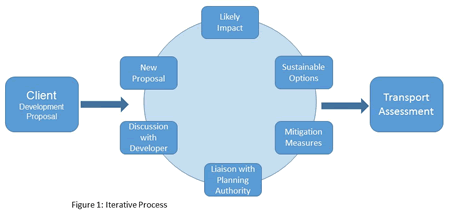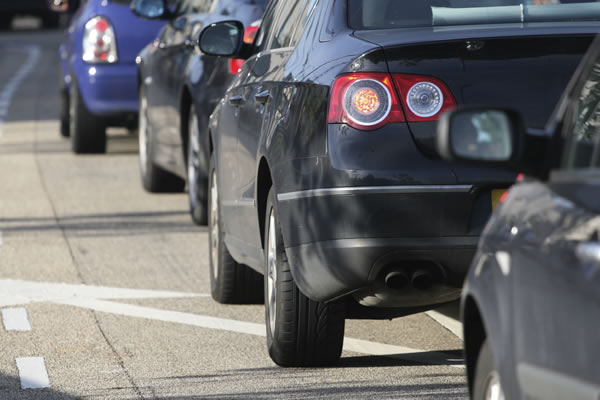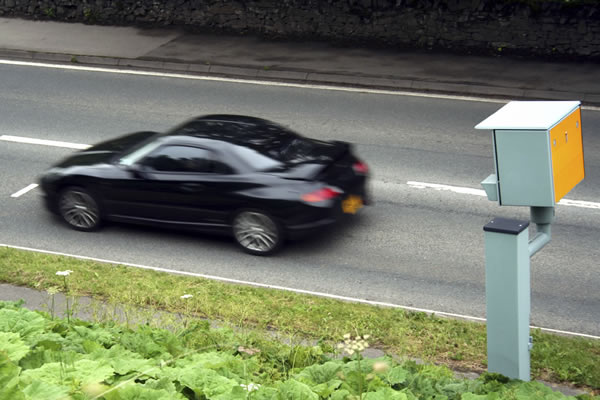Transport Assessment
In some cases, dependant on the Local Planning Authority guidelines, the transport issues arising out of a development proposal may not require a full Transport Assessment, in these instances, it has become common practice to produce a simplified report in the form of a Transport Statement. There will also be situations where the transport issues relating to a development proposal are negligible, and no formal assessment is necessary, again this is dependent upon the Local Planning Authority and varies throughout the Country. At Sanderson Associates, we have a broad knowledge of the requirements for many Local Planning Authorities and can help you in deciding which option is best.
Transport Assessments should consider the impact of the development on all transport modes, set out proposals to minimise the impact of the development on the transport network and promote measures to encourage sustainable and environmentally friendly transport. The assessment should be developed through consultation with the relevant stakeholders. This is an iterative process that often requires a number of revisions to the development proposals before it is agreed that the transport impact of the development has been reduced to a minimum. At this point the residual transport impact is assessed and mitigation measures are designed as necessary. Figure 1 below outlines this approach:-

This iterative approach to the Transport Assessment ensures that improvements to sustainable modes of transport are always considered first whereas measures to increase the capacity of roads or junctions are only considered at the end of the process mitigating the traffic impact of the development.
Transport Assessments identify the impact of the development in ‘person trips’ these are then broken down by transport mode. This normally involves the use of the nationally accepted TRICS database which challenges and validates assumptions about transport impacts of new developments” and provides trip generation models for analysis. Alternatively the use of bespoke survey data from other development sites can be used. This can give a more accurate estimate of trip generation if a suitably representative site can be found in close proximity to the new development proposal.
Once the trips have been estimated, their distribution on to the network can be predicted. This can be carried out though various techniques, including gravity models or using existing travel pattern information or other empirical data. Information is also gathered on any existing person/vehicle trips from the site and these are deducted from the model to produce a net increase or decrease in trips, agreed assessment periods normally considered are weekday AM/PM and weekend peak hour periods.
Now the net trip predictions are known, the local transport network is examined to establish whether capacity exists that can adequately accommodate them. Assessing the traffic impact on the highway network usually requires an assessment of the highway links and junction connections where the potential impact is anticipated. The traffic assessment will normally include junction modelling of current traffic movements plus movements for when the development is complete and then for future design year scenarios, which are normally at least 5 years hence. Surveys of existing traffic flows on the local network are required to establish the base situation, with traffic growth factors applied to predict future design year conditions. These are derived through the National Trip End Model (NTEM) forecasts used in the TEMPro software package (developed by the Department for Transport) or other empirical data.
Where the traffic assessment identifies that the level of additional traffic movements cannot be accommodated by existing infrastructure, then off site highway improvements need to be considered to ensure that the impact of the development is neutral. Similarly pedestrian/cycle routes and public transport facilities are examined and if improvements are necessary to accommodate development trips, then improvements need to be considered to these facilities to encourage access by sustainable modes.
The operational safety of a development is a key consideration and a detailed appraisal of the recorded personal injury accident records for the local highway network is usually required, determining casualty, linked factors and common problems that may need to be addressed as part of the development.
The assessment concludes with a summary of its findings and recommendations outlining the developments compliance with National Planning Policy Framework (NPPF) and Local Plans.
Local Plans are produced by each local planning authority and is the key to delivering sustainable development that reflects the vision and aspirations of the local community. Planning decisions must be taken in accordance with the plan unless material considerations indicate otherwise.
Local Plans are designed to contribute to the achievement of sustainable development. To this end, they should be consistent with the principles and policies set out in National Planning Policy Framework, including presumption in favour of sustainable development. The National Planning Policy Framework also indicates that the development should not be prevented or refused on highway grounds unless there is an unacceptable impact on highway safety or the resultant impact on the road network is severe.
What Our Clients Say:
Swept Path Analysis and Visibility Drawing incorporated into a Technical Note, Proposed Residential Dwelling, Colchester.
Highway Statement, Proposed Residential Development, Stockport
Transport Assessment, Proposed Residential Development (170 dwellings), Essex
Speed Survey, Proposed Private Residential Development – Testimonial
Access Feasibility Study, Proposed Private Residential Development – Testimonial
Analysis of Speed Survey and Swept Path Analysis
Stage 2 Road Safety Audit, Residential, Staffordshire
Construction Traffic Management Plan
Flood Risk Assessment, Testimonial, Industrial Development, Sheffield
Travel Plan
Require Assistance with a Transport Assessment?
Sanderson Associates have extensive experience in providing Transport Assessments, Transport Statements and Travel Plans for a wide variety of major and minor developments throughout the whole of the UK, Isle of Man and Ireland.
We would be pleased to provide you with a competitive fee proposal for the provision of our Transport Assessment Services, please call us on 01924 844080 or click here to complete our secure online form.



